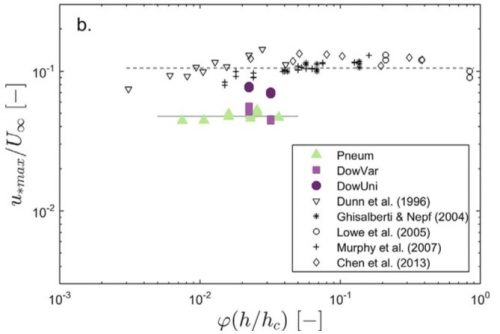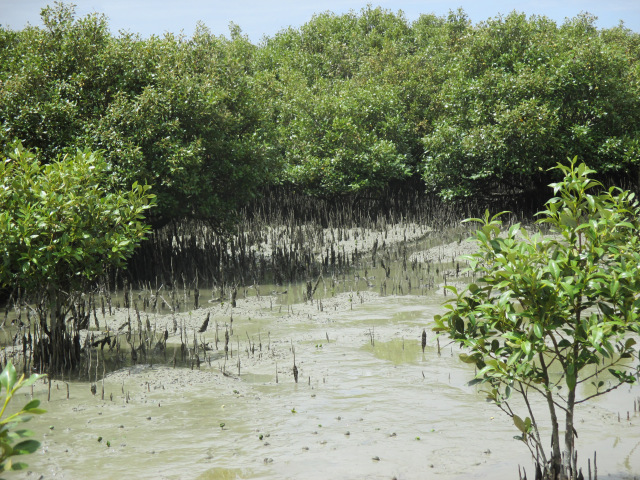Hydro- and morphodynamics in mangrove forests
Mangrove swamps provide many services: from housing unique ecosystems, to buffering coasts against the destructive forces of tsunamis, to storing a phenomenal amount of carbon in their soils. However, globally mangrove swamps are threatened by climate change and land use conversions, with rates of decline estimated to be around 1-2 % a year. We have several past and on-going projects investigating aspects of the flows within mangrove swamps to try to understand some of the key processes which govern how these regions evolve.
One project forms part of an international research project funded by the US Office of Naval Research. Along with investigators from Vietnam, the USA and the Netherlands (see collaborators page), we studied the flows in the fringing mangroves of Cu Lao Dung Island in the Mekong Delta in Vietnam. In particular, work by PhD student Ben Norris focussed on the small-scale flows around the roots of mangrove trees (known as pneumatophores) with the aim of determining how the obstacles affect waves and currents, and the associated implications for sediment transport.
One key part of the fieldwork was the deployment of Nortek Vectrino Profilers to measure the small-scale flows within the pneumatophore “canopy”. These instruments are really designed for laboratory use and require a power supply and computer connection. So, we had to be a little creative in our field methods (see below for pictures of our power and instrumentation set up on (a) kayaks, (b) a Vietnamese fishing boat, and (c) a bamboo tree platform).
Mekong work funded by:




Results showed that flows within the mangrove forest were surprisingly turbulent – sometimes the turbulence levels reached those observed in surf zones. While the turbulence exhibited substantial variability over small scales, turbulence was correlated with both vegetation density and wave energy. Velocity spectra showed multiple peaks which indicates vortex shedding from multiple cylinders and wake interference. On the large scale the forest fringe (the transition zone between forest and unvegetated mudflat) was found to be a hotspot for generating turbulence. At this location, the particularly high near-bed turbulence results in intensification of scour in the vicinity of roots, providing a morphodynamic feedback between fringe and forest: Fine materials are winnowed from the surface, transported into, and deposited in the forest interior, consistent with the long-term trends in forest evolution. The photo below shows the scour (circled) and deposition patterns at the forest fringe. The figure on the right shows a summary of the key processes. For more details and lots of other results, check out the publications page. Also, you can find a full photo-blog of our adventures in Vietnam here.


New Zealand based work funded by:

A second project was based here in New Zealand, where, in contrast to the rest of the world, mangroves are expanding.
We undertook field work at three sites, all of which were quite different to the Mekong: the Firth of Thames (photo below showing the much smaller and much muddier mangroves at this site), Whangapoua and Whitianga. Results from this project are still coming out, so watch this space.
As part of the project we also conducted laboratory experiments examining flow through pneumatophores. Unlike most laboratory experiments, which are undertaken with rigid and uniform-height cylinders as vegetation mimics, we used real pneumatophores. The results revealed that the variable heights of real pneumatophores make quite a substantial difference to the flow patterns. In particular, the shear at the top of the canopy and bed shear stresses were greatly reduced in the variable-height canopy. This result can be seen in the figure below which shows friction velocity (a form of shear stress) on the y-axis and vegetation density on the x-axis. Our measurements from inside the canopies of real pneumatophores (green triangles) show much lower friction velocities than have been measured in uniform canopies (other symbols). For further details check out our Advances in Water Resources paper.

